Walt Disney World Monorail Landscaping
another Monorail Society
Exclusive!
By TMS member Arthur Dutra
Walt Disney World is the site of the biggest theme
park/vacation resort in the United States. But what better way
to ferry guests around than on a 23.6 km monorail system? Even
though it is only a theme park resort, their twelve monorails
at peak capacity can carry over 200,000 people a day! But
unlike a surface light rail or elevated heavy rail line, the Walt
Disney World Monorail system is very aesthetically pleasing. In
a major city with little green space, a monorail system with wonderful
landscaping would be badly needed and wanted. So, to give you
some idea of the possibilities of monorail landscaping, I have
taken some pictures on a recent trip (Summer 2004). Here are some
of the ways landscaping has been used to augment the pleasing
aethstetics of an environmental friendly monorail system.
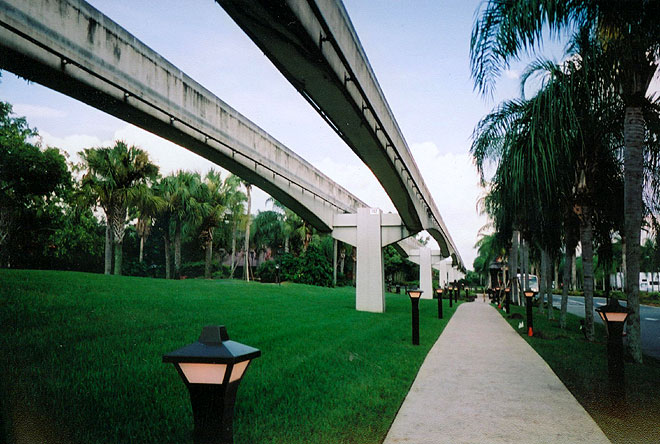
We'll start out with something simple - grass. The WDW
Monorail System has pylons about every 110 feet, and the guideway
itself casts little shadow, allowing almost any type of plant,
shrubbery, or dwarf trees to grow underneath it. Imagine this
being the downtown of a major city and the monorail is built down
the median of a boulevard. Imagine the positive aesthetical impacts
of just planting grass on the median. Light rail can't boast that.
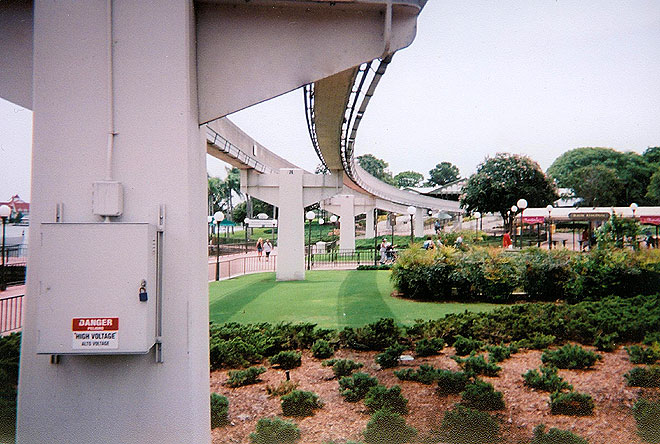
Here there is grass under the monorail, but this time we
see little hedges and shrubbery. Compare this picture to the above
one and see what a little mulch and plants will do to make the
scene look better. The small shadow made by a monorail system
is very evident here, not hampering the growth of the landscaping.
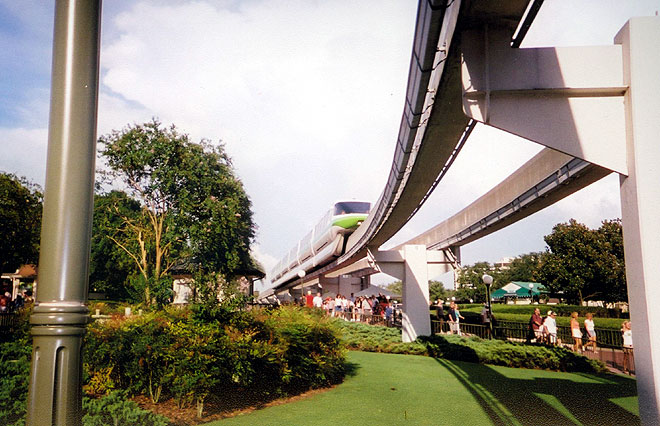
This shot shows more landscaping under the beamway.
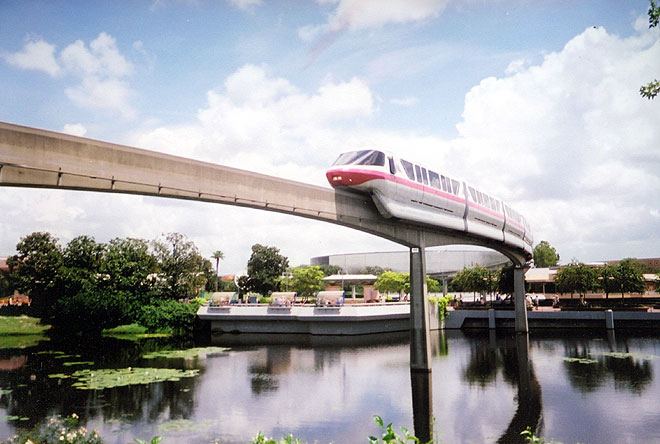
Water is also common in many cities, whether it be a river,
lake, or bay. Monorails easily traverse across bodies of water
without needing large fill separating the lake in two, or big
and bulky bridge structures.
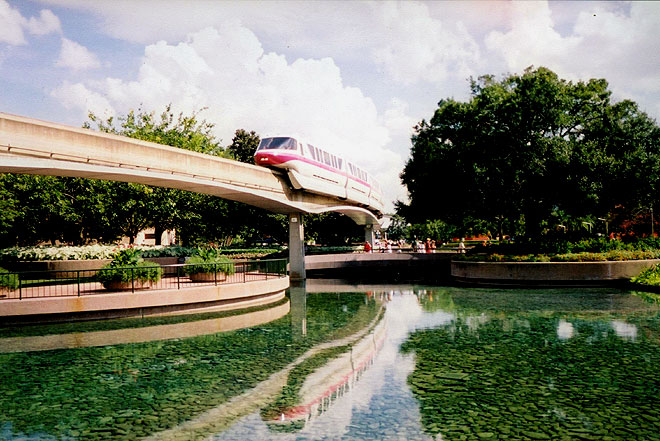
This beautiful shot of Monorail Pink traveling down the
beamway over the clear reflecting pools in EPCOT. Note the drip
pan in this shot under the beamway. Light rail proponents are
quick to point out that drip pans are ugly. In this shot and the
one below, the drip pan does little to affect the over all effect
of the monorail beam, if any. Even with drip pans on a monorail
(whether single beam, or a dual beam guideway), the footprint
and visual impacts of monorail is far less obtrusive than elevated
light rail!
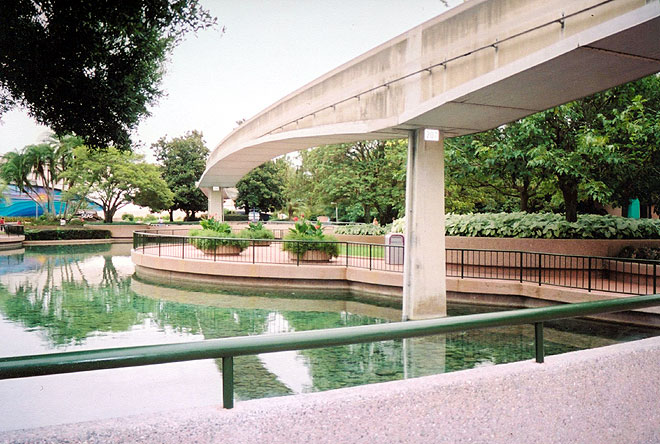
In this final look at landscaping at Walt Disney World, you
can once again see the minimal impact of the drip pans. Also note
the potted plants in the planters. These can easily be filled
with colorful flowers and placed under the beamway on a narrow
median strip along a street. I'd like to see light rail try to
build through here without destroying any of the landscaping.
To conclude, monorail offers the most landscaping options
for any city while still being an effective transit system. No
surface light rail system can allow as much landscaping possibilities
as monorail. Even with drip pans, monorail beamways are still
narrower than light rail. For the urban planner and environmentalist
alike, monorails definitely offer a very attractive choice for
any city.
Thanks Arthur, nice photography! (TMS
photo copyright information)
 / back to the Special Features Page / back to the Special Features Page |





